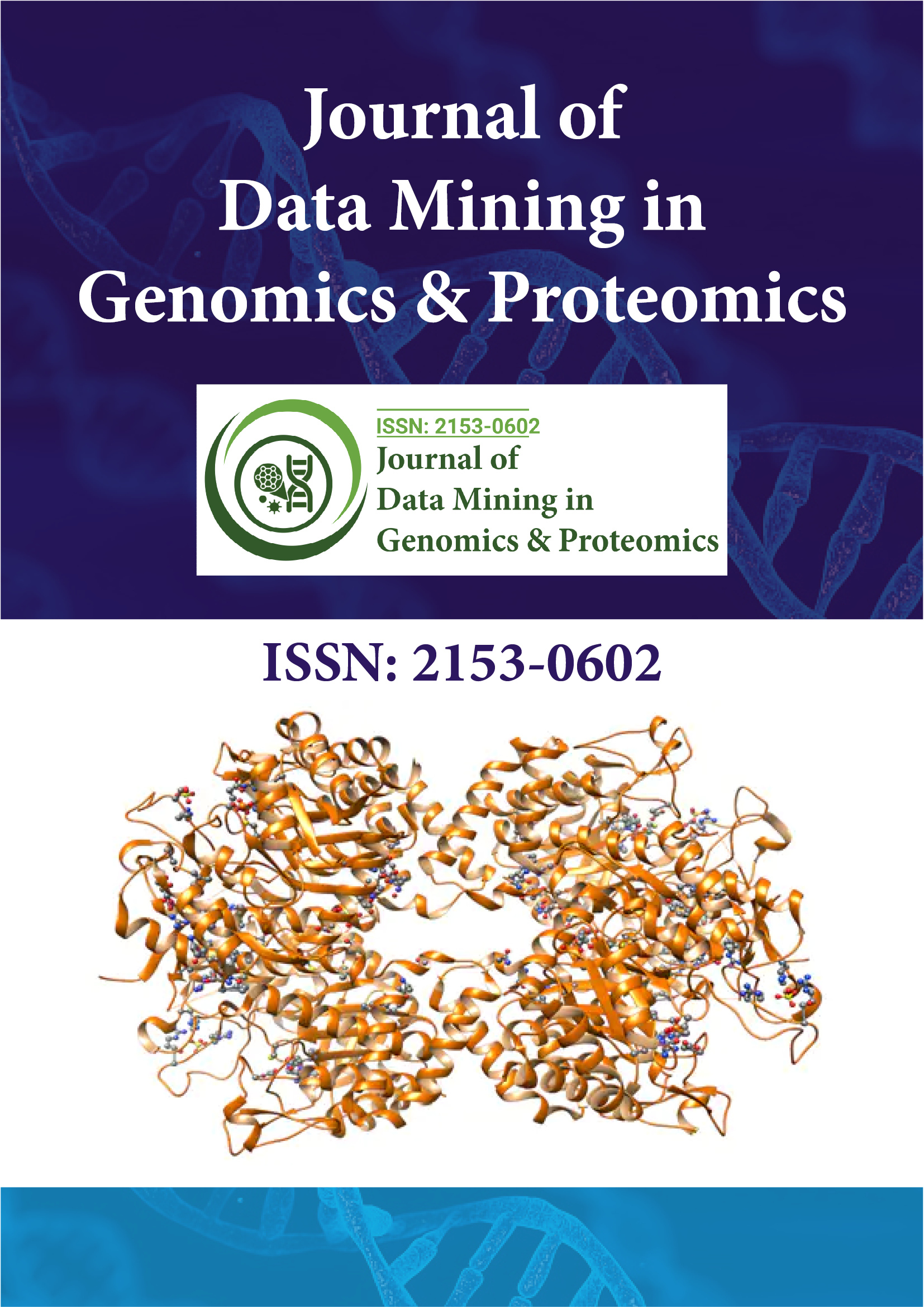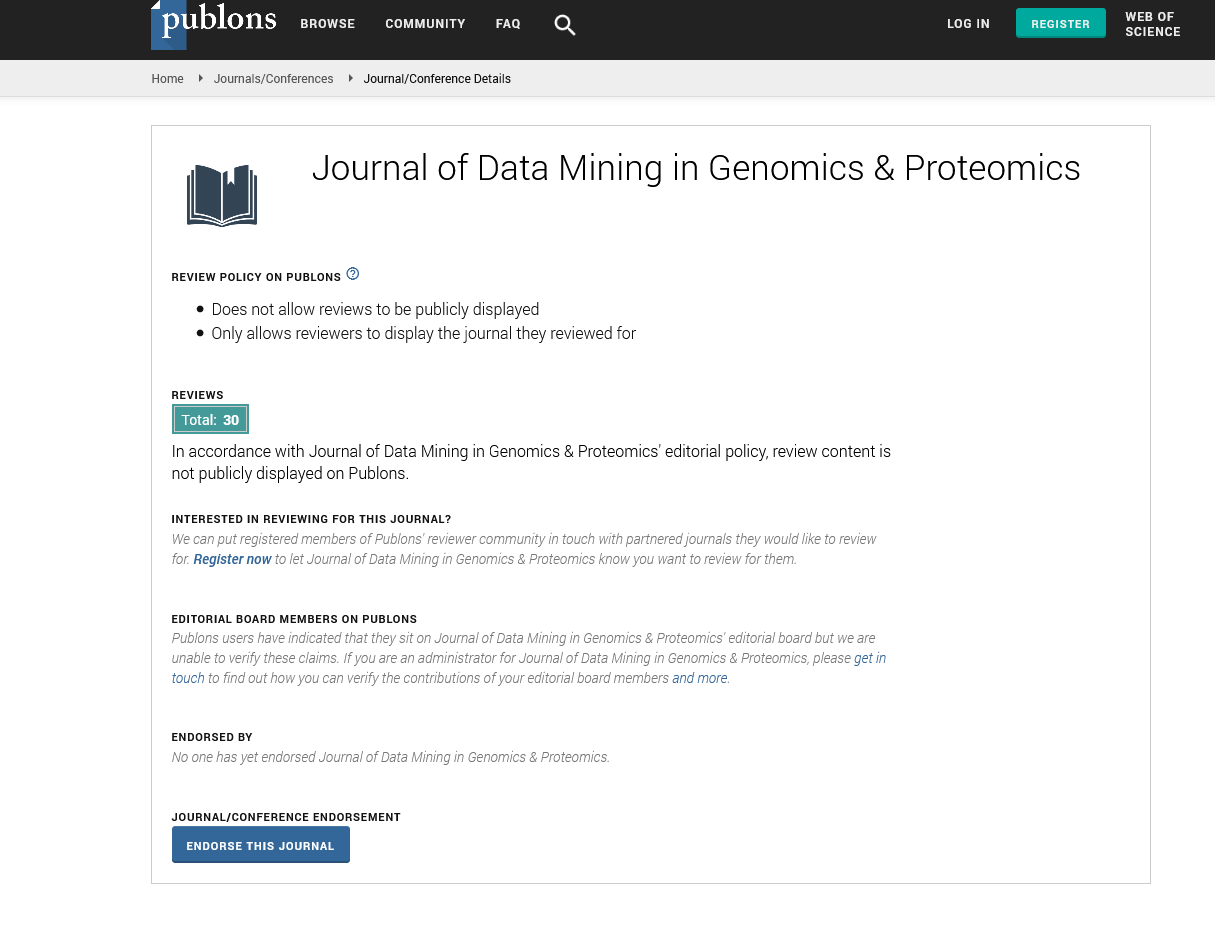Indexed In
- Academic Journals Database
- Open J Gate
- Genamics JournalSeek
- JournalTOCs
- ResearchBible
- Ulrich's Periodicals Directory
- Electronic Journals Library
- RefSeek
- Hamdard University
- EBSCO A-Z
- OCLC- WorldCat
- Scholarsteer
- SWB online catalog
- Virtual Library of Biology (vifabio)
- Publons
- MIAR
- Geneva Foundation for Medical Education and Research
- Euro Pub
- Google Scholar
Useful Links
Share This Page
Journal Flyer

Open Access Journals
- Agri and Aquaculture
- Biochemistry
- Bioinformatics & Systems Biology
- Business & Management
- Chemistry
- Clinical Sciences
- Engineering
- Food & Nutrition
- General Science
- Genetics & Molecular Biology
- Immunology & Microbiology
- Medical Sciences
- Neuroscience & Psychology
- Nursing & Health Care
- Pharmaceutical Sciences
Commentary - (2024) Volume 15, Issue 4
An Overview of Genomic Integrity: Origins of DNA Lesions and Repair Mechanisms
Thomas Forster*Received: 20-Nov-2024, Manuscript No. JDMGP-24-27958; Editor assigned: 22-Nov-2024, Pre QC No. JDMGP-24-27958 (PQ); Reviewed: 06-Dec-2024, QC No. JDMGP-24-27958; Revised: 13-Dec-2024, Manuscript No. JDMGP-24-27958 (R); Published: 20-Dec-2024, DOI: 10.4172/2153-0602.24.15.358
Description
Genomic integrity is important for maintaining cellular functions, ensuring accurate genetic information transfer and preventing diseases such as cancer. The genome, a cell's complete set of DNA, is constantly exposed to endogenous and exogenous factors that can damage its structure. If left unrepaired, these DNA lesions can lead to mutations, genomic instability and cell death. This article provides an overview of the sources of DNA damage and the cellular mechanisms that repair these lesions to preserve genomic stability.
Sources of DNA lesions
DNA lesions arise from both endogenous and exogenous sources. Endogenous damage occurs due to metabolic processes within the cell, while exogenous damage results from environmental factors.
Endogenous sources: One of the primary sources of endogenous DNA damage is Reactive Oxygen Species (ROS), which are byproducts of cellular metabolism. These ROS can oxidize DNA bases, cause single-strand breaks and generate abasic sites. Additionally, spontaneous hydrolysis can lead to deamination, depurination and depyrimidination, resulting in mismatched bases or abasic sites.
Exogenous sources: External factors, such as Ultraviolet (UV) radiation, ionizing radiation and chemical carcinogens, significantly contribute to DNA damage. UV radiation can cause the formation of Cyclobutane Pyrimidine Dimers (CPDs) and 6-4 photoproducts, which distort the DNA helix. Ionizing radiation can generate Double-Strand Breaks (DSBs), which are among the most lethal forms of DNA damage. Chemical agents, including alkylating agents and Polycyclic Aromatic Hydrocarbons (PAHs), can also modify DNA bases, leading to mutagenesis.
Mechanisms of DNA repair
To counteract the detrimental effects of DNA lesions, cells have evolved complicated repair pathways. These pathways are highly conserved across species and are categorized based on the type of damage they repair.
Base Excision Repair (BER): BER primarily addresses small, non-helix-distorting lesions caused by oxidative damage, alkylation, or deamination. The process begins with DNA glycosylases identifying and removing damaged bases, followed by endonuclease-mediated cleavage, DNA synthesis by DNA polymerase and ligation by DNA ligase.
Nucleotide Excision Repair (NER): NER deals with bulky, helix-distorting lesions, such as UV-induced CPDs and chemical adducts. This repair pathway involves the recognition of distortions, excision of a short single-stranded DNA segment containing the lesion, resynthesis by DNA polymerase and sealing by DNA ligase.
Mismatch Repair (MMR): MMR corrects errors that occur during DNA replication, such as base mismatches or small insertions/deletions. Proteins like MutS and MutL recognize and bind to mismatched bases, followed by exonuclease- mediated removal and repair synthesis.
Double-Strand Break Repair (DSBR): DSBs are repaired through two main pathways: Homologous Recombination (HR) and Non-Homologous End Joining (NHEJ). HR is an error-free repair mechanism that uses a homologous DNA template, while NHEJ directly ligates the broken ends, often resulting in small insertions or deletions.
Direct repair: Certain types of DNA damage, such as alkylation of bases, can be repaired directly without the need for excision. Enzymes like O6-Methylguanine-DNA Methyltransferase (MGMT) can remove alkyl groups from guanine residues, restoring the original base structure.
The importance of DNA Damage Response (DDR)
The DNA Damage Response (DDR) is a coordinated cellular network that detects, signals and repairs DNA lesions. DDR involves cell cycle checkpoints, signaling cascades mediated by proteins like ATM, ATR and p53 and activation of specific repair pathways. Failure in DDR can result in apoptosis, cellular senescence, or tumorigenesis.
Genomic integrity is maintained through a delicate balance between DNA damage and repair mechanisms. Cells are equipped with multiple repair pathways to address different types of DNA lesions. A deeper understanding of these pathways has significant implications for cancer therapy, as many chemotherapeutic agents induce DNA damage to eliminate cancer cells. Additionally, defects in DNA repair mechanisms are often linked to genetic disorders and increased cancer susceptibility. Continued research in this field will prepare for innovative therapeutic approaches to target DNA repair pathways and improve human health outcomes.
Citation: Forster T (2024). An Overview of Genomic Integrity: Origins of DNA Lesions and Repair Mechanisms. J Data Mining Genomics Proteomics. 15:358.
Copyright: © 2024 Forster T. This is an open-access article distributed under the terms of the Creative Commons Attribution License, which permits unrestricted use, distribution, and reproduction in any medium, provided the original author and source are credited.

